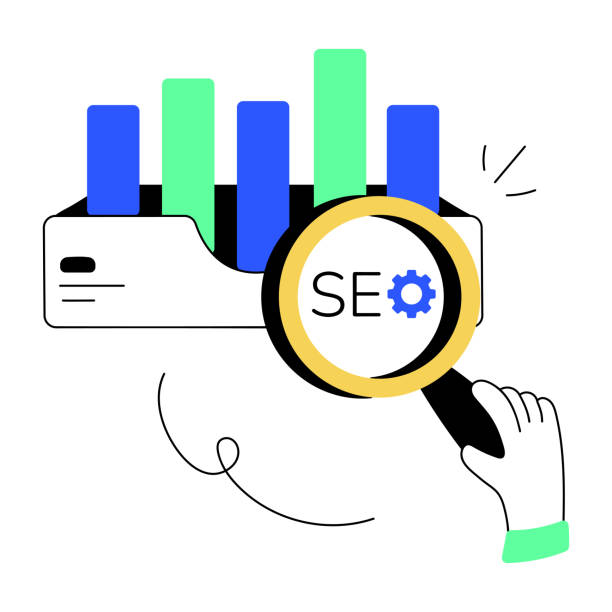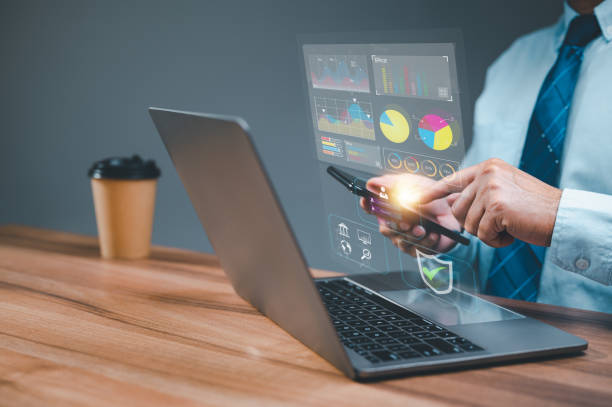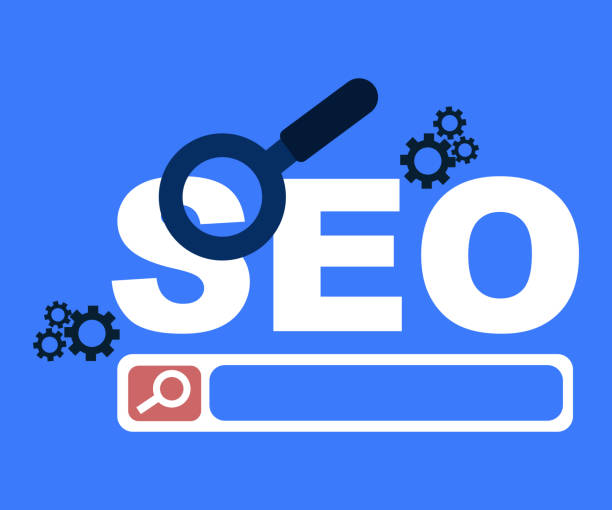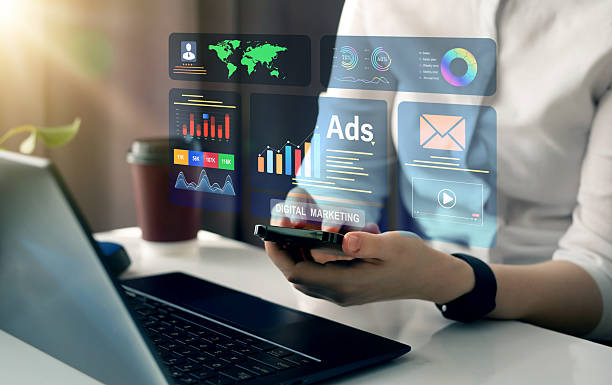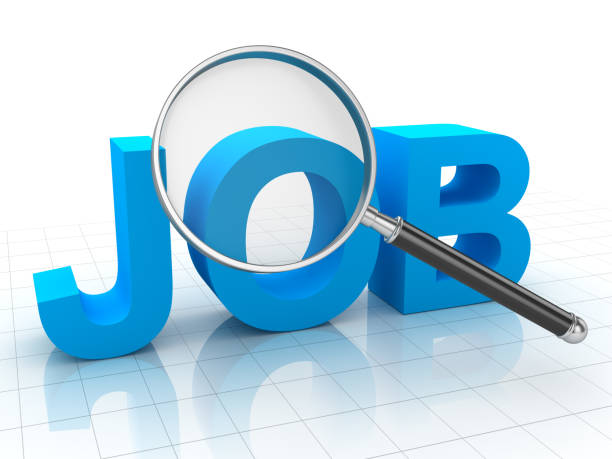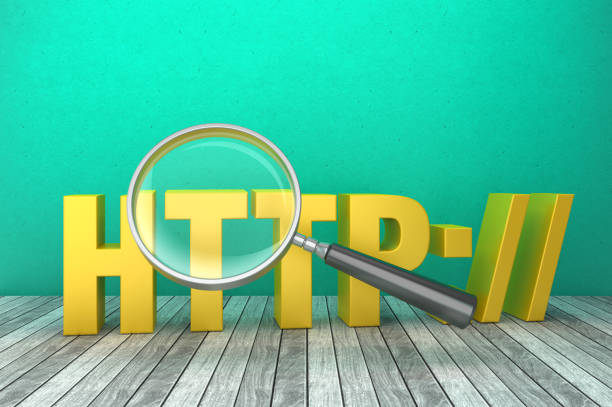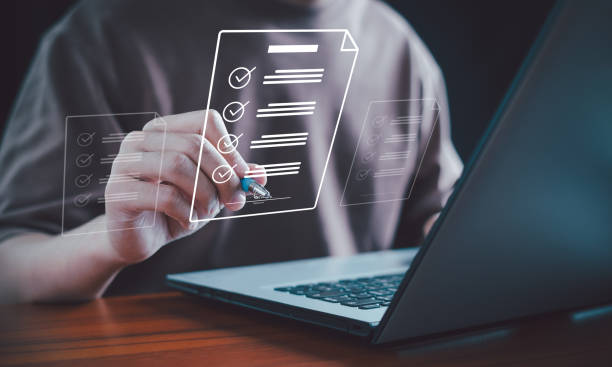What is internal SEO and why is it important?
What is internal SEO and why is it important?
Internal SEO, also known as on-page SEO, is a set of techniques and actions that are performed directly on your website and its content to improve the website’s ranking in search engine results, such as Google.
These actions include optimizing titles, meta descriptions, content, URL structure, images, and other website elements.
The importance of internal SEO can be examined from several perspectives:
- Improved ranking in search results By optimizing content and website elements, search engines can more easily understand the topic and value of your content, and as a result, your website’s ranking in search results increases.
- Attracting targeted traffic By being placed in higher ranks of search results, more people will see and visit your website.
This traffic is usually targeted, because users who are looking for information related to your content find your website. - Improved user experience Internal SEO not only helps search engines, but also improves user experience.
By creating high-quality content, a suitable website structure, and high loading speed, users enjoy visiting your website and are more likely to return. - Increased website credibility A website that ranks high in search results is considered a reliable and trustworthy source.
This can help increase your brand’s credibility and attract new customers.
In short, internal SEO is a valuable investment that can help you optimize your website, attract targeted traffic, improve user experience, and increase your brand’s credibility.
Internal SEO is the foundation for success in the online world.
Did you know that 94% of users’ first impressions of a business are related to its website design? With professional corporate website design by **Rasaweb**, turn this first impression into an opportunity for growth.
✅ Attract more customers and increase sales
✅ Create credibility and trust in the eyes of the audience⚡ Get free website design consultation!
Keyword research, the foundation of internal SEO
Keyword research, the foundation of internal SEO
Keyword research is the first and most important step in internal SEO.
Without a proper understanding of the words your audience uses to search for information related to your business, you cannot optimize your content and attract targeted traffic.
The keyword research process includes the following steps:
- Identify main topics Initially, you must identify the main topics of your business.
For example, if you have an online cosmetics store, your main topics could include “cosmetics,” “skincare,” “hair styling,” and so on. - Prepare a list of initial keywords After identifying the main topics, make a list of keywords related to each topic.
These words can include product names, services, technical terms, and questions that your audience may ask. - Use keyword research tools To expand your list of keywords and find more relevant keywords with higher search volume, you can use keyword research tools such as Ahrefs, Ubersuggest, Keywordtool.io, and Google Keyword Planner.
- Analyze keywords After collecting the list of keywords, you should analyze them and select the words that are most relevant to your business, have a suitable search volume, and have less competition.
- Keyword targeting Keyword targeting in internal SEO means selecting and focusing on specific keywords that you want your website to rank for in search results.
By conducting accurate and targeted keyword research, you can optimize your content and attract targeted traffic.
Start internal SEO with a strong foundation.
Optimizing Page Title (Title Tag) and Meta Description
Optimizing Page Title (Title Tag) and Meta Description
The page title (Title Tag) and meta description (Meta Description) are two important elements in HTML that are displayed in search results and play an important role in attracting users and increasing your website’s traffic.
Internal SEO pays special attention to these two.
Page Title (Title Tag)
The page title is the title that is displayed in the browser tab and in the search results.
The page title should:
- Contain the page’s main keyword.
- Be attractive and engaging to encourage users to click.
- Be unique and different from the titles of other pages on your website.
- Be between 50 and 60 characters long.
Click here to preview your posts with PRO themes ››
Meta Description (Meta Description)
The meta description is a summary of the page’s content that is displayed below the page title in the search results.
The meta description should:
- Contain the page’s main keyword.
- Provide an accurate and engaging description of the page’s content.
- Encourage users to click.
- Be between 150 and 160 characters long.
Optimizing the page title and meta description is an important step in internal SEO that can help improve your website’s ranking in search results and increase its traffic.
| Feature | Description |
|---|---|
| Main Keyword | Must be present in the title and meta description. |
| Attractiveness | Must be attractive and encouraging for users. |
| Uniqueness | Must be different from other pages on the website. |
| Suitable Length | Title: 50-60 characters, Meta Description: 150-160 characters |
Optimizing Page Content for SEO
Optimizing Page Content for SEO
The page content is the heart of your website and plays the main role in attracting users and ranking in search results.
Optimizing page content for internal SEO includes the following:
- Creating high-quality and valuable content Your content should provide accurate, complete, and useful information to users.
- Using keywords in the content Use main and related keywords naturally and in appropriate places in the content.
- Optimizing content structure Use titles (H1, H2, H3, …), subheadings, paragraphs, lists, and images to organize content and make it readable.
- Optimizing images Describe images using the ALT tag and reduce their size to increase page loading speed.
- Internal Linking Link to other pages on your website to guide users to relevant content and improve your website’s structure.
By creating high-quality content and optimizing it for SEO, you can increase your website’s organic traffic and improve its ranking in search results.
Internal SEO means quality content!
Does your current website convert visitors into customers or drive them away? Solve this problem forever with professional corporate website design by Rasaweb!
✅ Create strong credibility and branding
✅ Attract target customers and increase sales
⚡ Get a free consultation now!
Optimizing URL Structure
Optimizing URL Structure
The URL structure of your website plays an important role in SEO and user experience.
Optimized URLs should:
- Be short and descriptive URLs should be short and concise and clearly indicate the topic of the page.
- Contain keywords Use the page’s main keywords in the URL.
- Be readable Avoid using special characters and long numbers.
- Be consistent with the website structure URLs should be consistent with your website structure and have a logical hierarchy.
For example, instead of using the following URL:
www.example.com/page?id=123&category=456
Use the following URL:
www.example.com/blog/seo-internal
Optimizing the URL structure is a simple but important step in internal SEO that can help improve your website’s ranking in search results and user experience.
Internal SEO pays attention to details.
Optimizing Images for SEO
Optimizing Images for SEO
Images play an important role in the attractiveness and value of your website’s content.
Optimizing images for SEO includes the following:
- Using high-quality images Images should be clear, high-quality, and relevant to the page’s content.
- Describing images using the ALT tag The ALT tag helps search engines understand the topic of the image.
- Reducing image size Reduce the size of images to increase page loading speed.
- Using an appropriate file name The file name of images should be descriptive and contain keywords.
For example, instead of using the following file name:
IMG_1234.jpg
Use the following file name:
seo-internal-guide.jpg
By optimizing images, you can improve your website’s ranking in Google Images search results and attract more traffic to your website.
Internal SEO covers all aspects.
Page Speed and SEO
Page Speed and SEO
Page loading speed is one of the important ranking factors in Google.
Users who are waiting for a web page to load are likely to leave that page and go to another website.
Internal SEO and page loading speed have a direct relationship.
Click here to preview your posts with PRO themes ››
To improve page loading speed, you can take the following actions:
- Optimizing Images
- Activating Gzip compression
- Using CDN (Content Delivery Network)
- Reducing HTTP requests
- Optimizing codes (HTML, CSS, JavaScript)
There are various tools for measuring page loading speed, including Google PageSpeed Insights and GTmetrix.
By using these tools, you can identify problems related to page loading speed and take action to fix them.
| Factor | Impact on Speed |
|---|---|
| High Volume Images | Speed Decrease |
| Unoptimized Codes | Speed Decrease |
| Not Using CDN | Speed Decrease |
| Inappropriate Hosting | Speed Decrease |
Internal and External Linking
Internal and External Linking
Internal and external linking are two important strategies in SEO that help improve website structure, increase credibility, and guide users.
Internal SEO becomes more powerful with linking.
- Internal Linking Internal linking means linking from one page of a website to other pages of the same website.
Internal linking helps search engines understand your website structure and identify more important pages.
Also, internal linking helps users easily navigate your website and find relevant content. - External Linking External linking means linking from your website to other websites.
External linking to websites that are credible and related to your topic can help increase your website’s credibility.
However, you should be careful with external linking and only link to reputable websites.
Internal and external linking should be done naturally and in connection with the page’s content.
Avoid using too many links and linking to irrelevant websites.
Internal SEO is optimized with smart linking.
Is your current online store design causing you to lose customers and sales?
Rasaweb is your solution with modern and user-friendly online store designs!
✅ Significant increase in conversion rates and sales
✅ Creating strong branding and gaining customer trust
⚡ Get a free online store design consultation from Rasaweb!
Mobile SEO and Its Importance
Mobile SEO and Its Importance
With the increasing use of mobile devices to search the internet, mobile SEO has become a critical factor in website rankings.
Google uses Mobile-First Indexing, meaning the mobile version of your website is used to rank in search results.
Mobile internal SEO is a necessity.
To optimize your website for mobile, you can take the following actions:
- Using Responsive Design Responsive design allows your website to automatically adapt to the screen size of different devices.
- Optimizing page loading speed Page loading speed is very important on mobile devices, as mobile users usually have a weaker internet connection.
- Optimizing User Experience Make sure your website is easy to use on mobile devices and users can easily find the information they need.
- Using AMP (Accelerated Mobile Pages) AMP is an open-source framework that allows you to create fast and lightweight web pages.
By optimizing your website for mobile, you can improve the user experience, increase your website’s ranking in search results, and attract more traffic to your website.
Internal SEO has the first word in the mobile world.
Continuous Monitoring and Improvement of Internal SEO
Continuous Monitoring and Improvement of Internal SEO
Internal SEO is an ongoing process and requires continuous monitoring and improvement.
You should regularly monitor the performance of your website and update your SEO strategy according to changes in search engine algorithms.
To monitor your website’s performance, you can use the following tools:
- Google Analytics
- Google Search Console
- Ahrefs
- SEMrush
Using these tools, you can obtain useful information about website traffic, keywords, page rankings, backlinks, and other important SEO factors.
By analyzing this information, you can identify the strengths and weaknesses of your website and take action to improve its performance.
Internal SEO requires continuous effort.
Remember that internal SEO is a long-term investment and its results appear over time.
With patience and continuous effort, you can optimize your website and achieve top rankings in search results.
Internal SEO is the key to online success.
Click here to preview your posts with PRO themes ››
Website internal optimization, also known as internal SEO, includes a set of actions performed directly inside your website to improve its position in organic search results.
This process includes optimizing content, keywords, tags, URLs, and other related elements that help search engines better understand your website and rank it in search results.
Frequently Asked Questions
| Number | Question | Answer |
|---|---|---|
| 1 | What is On-Page SEO? | Internal SEO refers to a set of actions that are performed within the website and to optimize its pages in order to gain a better rank in search results. |
| 2 | What is the most important factor in internal SEO? | High-quality, relevant, and comprehensive content that meets the user’s needs is the most important factor in internal SEO. |
| 3 | What role does the Title Tag play in internal SEO? | The title tag is one of the most important factors that tells search engines and users what the page content is about. It should include the main keyword and be attractive. |
| 4 | How important is the Meta Description tag? | Although it does not directly affect ranking, it is very effective on the click-through rate (CTR) in search results and encourages users to visit the page. |
| 5 | How is image optimization done in internal SEO? | By using an appropriate alt tag, compressing the image size to increase loading speed, and naming the image file meaningfully. |
| 6 | What is the importance of using headings (H1, H2, H3) in internal SEO? | Headings help structure content, increase readability, and help search engines understand the hierarchy and subtopics of the content. |
| 7 | What does Internal Linking mean and what are its benefits? | Internal linking means creating links between different pages of a website. This helps to distribute credit, improve user navigation, and help search engine crawling. |
| 8 | Where should the Focus Keyword be placed on the page? | The main keyword should be in the title tag, meta description, H1, first paragraph, and naturally throughout the text, and if possible in the URL address. |
| 9 | What effect does copy or duplicate content have on internal SEO? | Duplicate content can harm the site’s ranking and confuse search engines as to which version is original and may detect it as spam. |
| 10 | How important is page loading speed in internal SEO? | Page loading speed is an important ranking factor and directly affects user experience. Slow pages increase user bounce rates. |
And other services of Rasa Web advertising agency in the field of advertising
Smart UI/UX: A combination of creativity and technology to increase site visits by managing Google Ads.
Smart Direct Marketing: An innovative platform for improving online growth with smart data analysis.
Smart Advertising Campaign: Transform user interaction with the help of dedicated programming.
Smart Content Strategy: A combination of creativity and technology to attract customers by using real data.
Smart Customer Journey Map: A combination of creativity and technology for online growth by using real data.
And more than hundreds of other services in the field of internet advertising, advertising consulting and organizational solutions
Internet Advertising | Advertising Strategy | Advertorial Report
Resources
What is internal SEO? Internal Site SEO Training (On-Page SEO)
,What is internal SEO and what effect does it have on the site’s ranking? | M-SEO
,What is internal SEO? Comprehensive On-Page SEO Training
,What is Internal SEO (On-Page SEO) and how is it done? – Limotop
? Are you ready to transform your business in the digital world? Rasaweb Aferin, with expertise in secure website design and comprehensive digital marketing services, is your trusted partner to reach the peaks of success.
📍 Tehran, Mirdamad Street, next to the Central Bank, South Kazeroun Alley, Ramin Alley No. 6


